Without a doubt, cheese fondue is one of the most famous melted cheese dishes from anywhere in the world. And there’s good reason for this. But like in any recipe using cheese, the selection of cheese is of paramount importance. Read on to discover the best cheeses for Swiss fondue.

SEE ALSO: 21 of the most iconic cheesy dishes from all around the world →
What is fondue?
Swiss Cheese Fondue is a traditional dish of melted cheese served in a communal pot (called Caquelon) over a portable stove (called réchaud). Actually, fondue is a French word that means “melted”.
The concept is a very simple one. Firstly, you melt the cheese in the pot. Then, you dip bread using long-stemmed forks into the pot to coat it in cheese.
The recipe is a pretty simple one. All you need is garlic, white wine, corn starch, lemon juice, Kirsch, pepper and nutmeg. However, the key to nailing your fondue is to use the right combination of cheeses.
One cheese is never enough. Because you want a combination of characteristics which can’t be found in any one single cheese.
After extensive testing and arduous tasting sessions, we’ve reached the conclusion that three is the magic number. But which three cheeses should you use?
Best Swiss cheeses for fondue
When it comes to creating the perfect fondue, selecting the right cheeses is essential for a delightful and harmonious blend of flavours and textures.
1 Gruyère
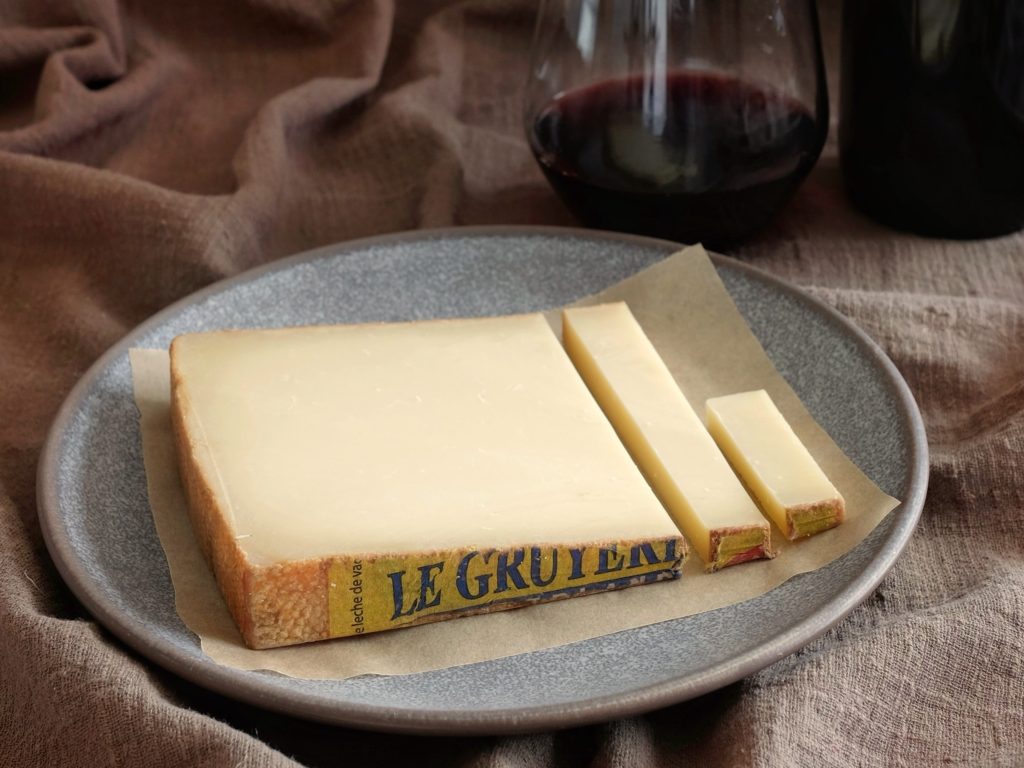
Gruyère is a traditional pressed cooked cheese made with raw cow’s milk by a select number of artisanal cheesemakers in Switzerland. Gruyère’s origins date back to the early 12th century in the district of La Gruyère.
The AOP now restricts its production to the Cantons of Fribourg, Vaud, Neuchâtel, Jura and Bern. Moreover, Fribourg is home to the tiny village of Gruyères, where cheese has been made for more than 800 years.
To this day, cheesemakers use a traditional recipe to transform local raw milk in large copper vats. After adding cultures and rennet, they cut the resulting mass of curd and heat them to 57° (135°F) for 45 minutes. Thereafter, the maker pumps the curd and whey into large round moulds inscribed with Le Gruyère AOP.
Each wheel is then pressed for about twenty hours before being placed in a salt bath for 24 hours. After three months in the dairy, they transfer the wheels to maturing cellars for a slow maturation process.
Between six and nine months of age, this famous cheese has a soft and refined taste with sweet notes. From 10 months onwards, it is referred to as Réserve and has a full-flavoured and aromatic taste.
Some wheels will be matured up to 18, or even 24 months for even more robust flavours. However, the best age of Gruyère for fondue is between nine and 12 months. At this age, the cheese still has a relatively high moisture content with makes it melt more spectacularly.
2 Emmentaler
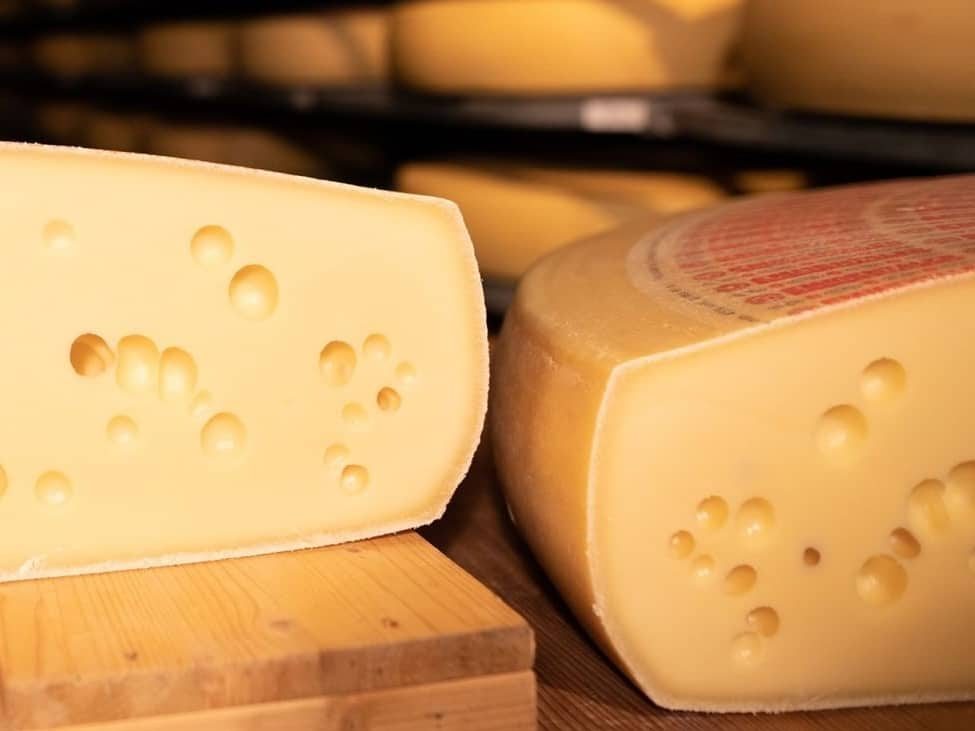
Next, we have the cheese that has become indelibly attached to Switzerland thanks to its appearance. Indeed, when you think of Swiss cheese, you’re most probably picturing Emmentaler. Emmentaler is a famous pressed cooked cheese that is instantly recognisable due to its large size and spattering of eyes (holes).
Actually, this traditional Swiss cheese owes its name to its region of origin, the valley of the River Emme in the Bern canton. In this picturesque location, records of cheesemaking date back to the 13th century.
Presently, Emmentaler is made in around 110 village creameries. Significantly, the AOP dictates that the artisans have to use fresh, untreated milk. It takes around 12 litres of milk to make 1 kg of Emmentaler. Once the cheesemaker has transferred fresh milk to copper vats, they add natural whey, rennet and three types of bacteria.
The most significant one is Propionibacterium freudenreichii which is responsible for the eye formation in the cheese. Afterwards, they separate the curd, place it in moulds and drain the excess whey. At this point, the wheels are brined and sent to maturation rooms.
Over the next 2 months, the cheese will mature at warm temperatures to encourage the formation of the eyes. Wheels of Emmentaler have a diameter of 80 to 100 cm and weigh up to 120 kg.
Effectively, the cheeses are released for consumption at different ages. At four months, the young cheese is mild and nutty. By eight months (called Réserve), it becomes much fruitier.
Finally, at 12 months, it develops a full-flavoured complexity and a crumblier texture. Our pick for Swiss cheese fondue has to be the young and mild four-month-old version.
3 Vacherin Fribourgeois
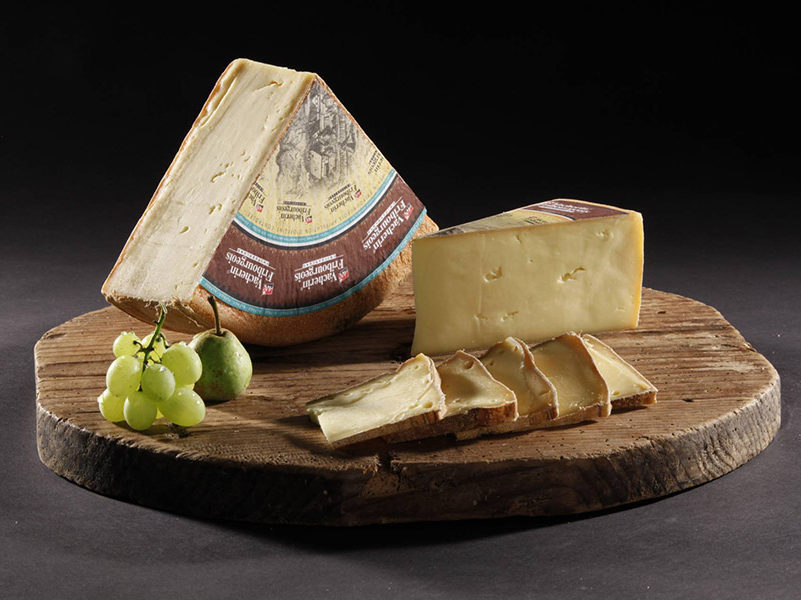
Vacherin Fribourgeois AOP is a Swiss pressed uncooked cheese made with raw cow’s milk in the cantons of Vaud and Fribourg. This delicious cheese is also known as Freiburger Vacherin by the German-speaking locals.
In addition to those regions in Switzerland, this cheese is also made in the Jura Mountains across the border in France.
To make this grossly underrated mountain cheese, local artisans use fresh raw milk from Fribourgeois cows. The AOP dictates that the cows have to graze freely on Alpine grass and wildflowers from late spring to summer.
As a result, their fresh milk is a celebration of the local terroir. After adding rennet and cultures, the cheesemakers press the resultant curds into moulds.
Once the young cheese is formed, it is regularly washed with a proprietary mixture for up to four months. Presently, the producers release their wheels of cheese for consumption at different ages. Indeed, you can enjoy the Classic Vacherin Fribourgeois at 6-12 weeks. And Rustic Vacherin Fribourgeois at up to 25 weeks.
At either age, the cheese has a thick, brownish-red, natural rind, with an underlying cross-hatch pattern. Moreover, its paste is light yellow and very smooth, with small eyes and occasional slits. Overall, this cheese is an excellent table cheese with its flavour ranging from buttery to nutty.
However, it truly comes into its own when melted in a fondue. As was the case with our first two cheeses, the younger version is our recommendation for fondue.
Beyond Fondue Moitié-Moitié
One of the most popular recipes for Swiss Fondue is called Moitié-Moitié and it uses two of our recommended cheeses. Those are Gruyère and Vacherin Fribourgeois.
As you can imagine, this is a spectacular combination in its own right. But we like having the extra depth and complexity provided by Emmentaler.
So, now you know our recommendation for the best cheeses to use in Swiss cheese fondue. Do you have a preferred combination? Let me know in the comments.
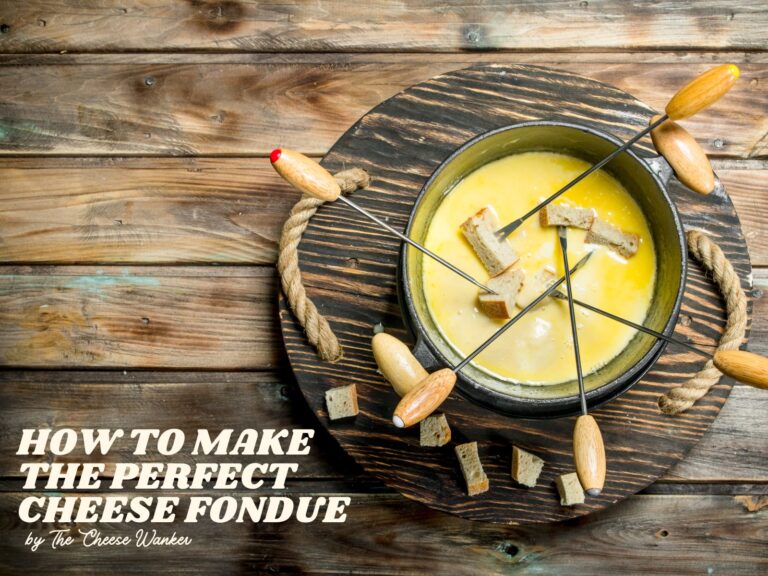
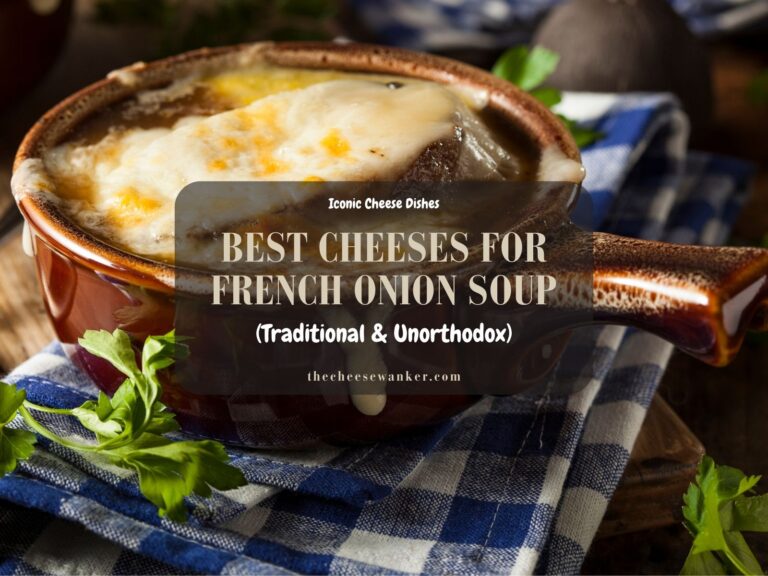


Hi Jonah. Thanks for your interesting article as I’m in search of the perfect recipe for my house cheese fondue. You say that “three is the magic number”, but what’s the ratio you recommend??
Hi Gui, thank you for reading our post and leaving a comment. A good starting point is 33% of each cheese but personal preference can play a role. For example, I love Vacherin Fribourgeois and will typically use 50% of it and split the other two cheeses equally at 25% each.